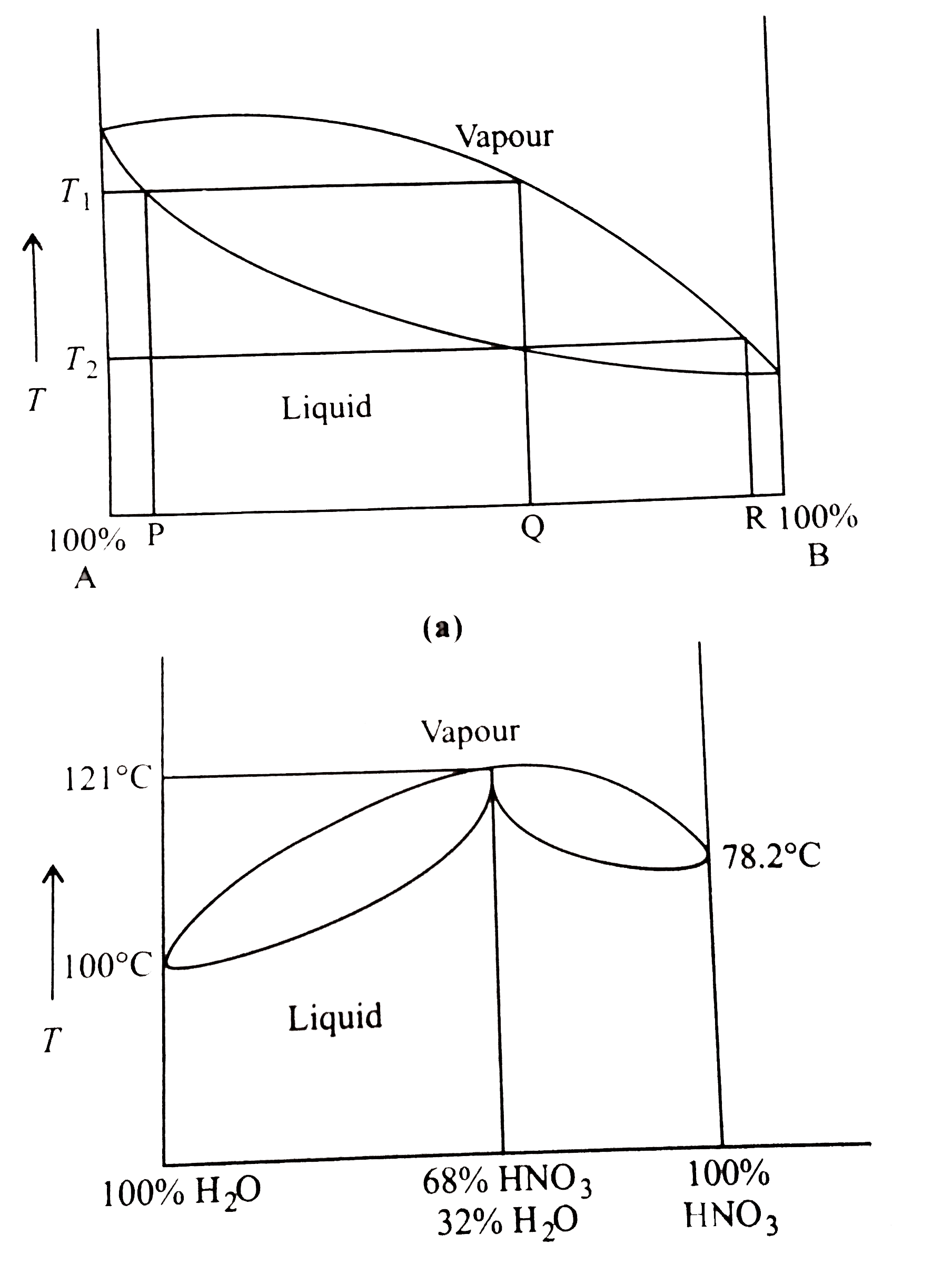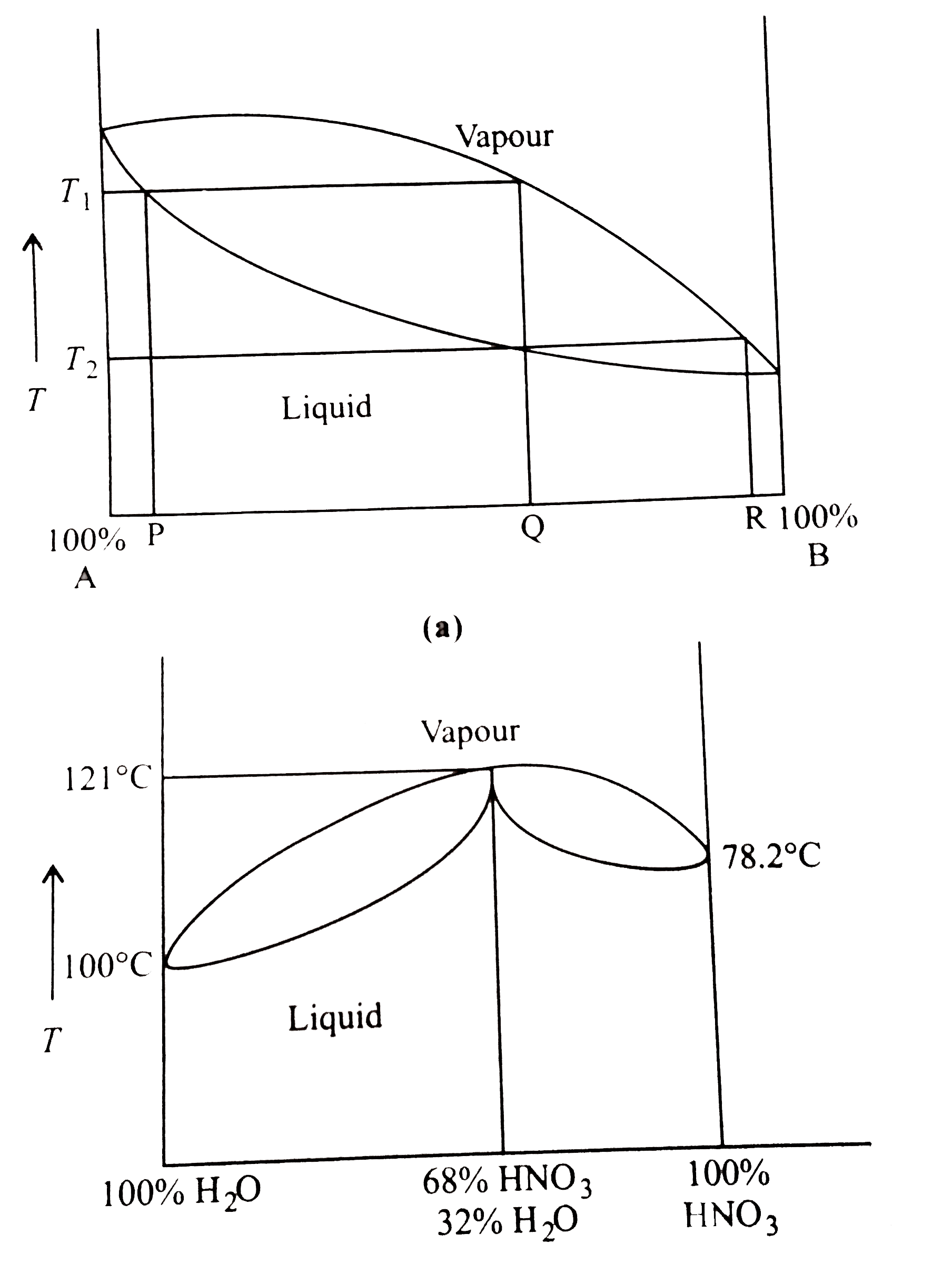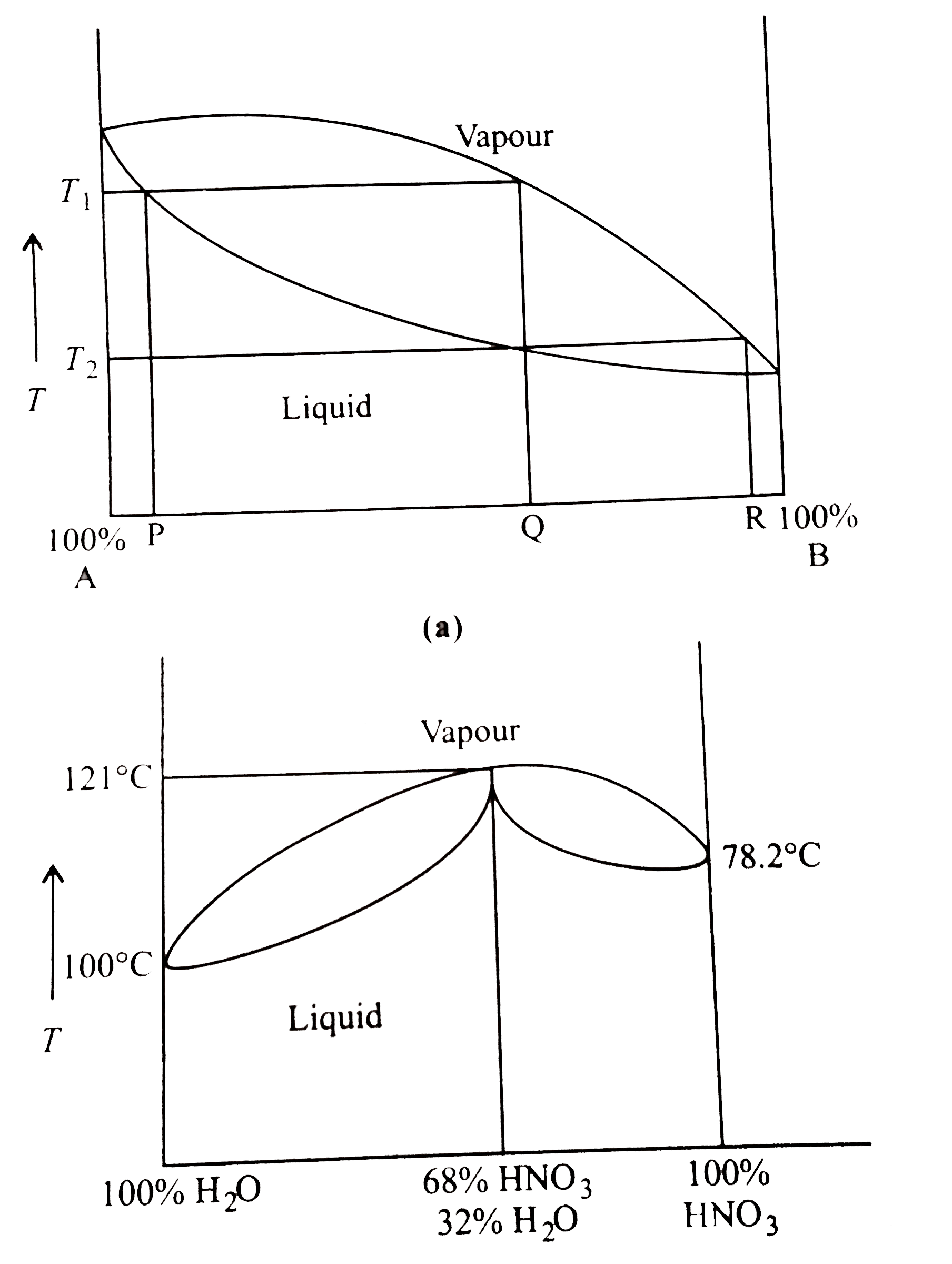represents the distillation of mixture of liquid A and liquid B which gives both of pure liquid A and B . Represents the azeotropic mixture of HNO3 and H2O which distillation gives an azeotropic mixture and either of pure liquid. We cannot separate both the pure liquid, i.e., H2O and HNO3.
Which of the following statements is/are correct?
i. HNO3 solution is not obeying the Raoult's law.
ii. More the difference in vapour pressure of pure compounds forming a mixture, easier to separate them through distillation.
iii. T2 is less than T1 because the liquid of composition Q is richer in more volatile component.

(ii) and (iii)
(ii)
(i) and (ii)
(i),(ii) and (iii)
The correct Answer is:D
Step by step video, text & image solution for represents the distillation of mixture of liquid A and liquid B which gives both of pure liquid A and B . Represents the azeotropic mixture of HNO_(3) and H_(2)O which distillation gives an azeotropic mixture and either of pure liquid. We cannot separate both the pure liquid, i.e., H_(2)O and HNO_(3). Which of the following statements is/are correct? i. HNO_(3) solution is not obeying the Raoult's law. ii. More the difference in vapour pressure of pure compounds forming a mixture, easier to separate them through distillation. iii. T_(2) is less than T_(1) because the liquid of composition Q is richer in more volatile component. by Chemistry experts to help you in doubts & scoring excellent marks in Class 12 exams.
Topper's Solved these Questions
- BOOK - CENGAGE CHEMISTRYCHAPTER - SOLUTIONSEXERCISE - Exercises (Multiple Correct)25videos
SOLUTIONS
- BOOK - CENGAGE CHEMISTRYCHAPTER - SOLUTIONSEXERCISE - Exercises (Single Correct)99videos
SOLUTIONS
- BOOK - CENGAGE CHEMISTRYCHAPTER - SOLUTIONSEXERCISE - Solved Examples40videos
SOLUTIONS
- BOOK - CENGAGE CHEMISTRYCHAPTER - SOLID STATEEXERCISE - Ex 1.2 (Objective)9videos
SOLID STATE
- BOOK - CENGAGE CHEMISTRYCHAPTER - SURFACE CHEMISTRYEXERCISE - Archives Subjective2videos
SURFACE CHEMISTRY
Similar Questions
Fractional distillation|Azeotropes mixture
View Solutionrepresents the distillation of mixture of liquid A and liquid B which gives both of pure liquid A and B . Represents the azeotropic mixture of HNO3 and H2O which distillation gives an azeotropic mixture and either of pure liquid. We cannot separate both the pure liquid, i.e., H2O and HNO3.
What is the result of distilling a mixture of 80%HNO3 and 20%H2O? View Solution
View Solution
Knowledge Check
- Question 1 - Select One
represents the distillation of mixture of liquid A and liquid B which gives both of pure liquid A and B . Represents the azeotropic mixture of HNO3 and H2O which distillation gives an azeotropic mixture and either of pure liquid. We cannot separate both the pure liquid, i.e., H2O and HNO3.
a solution of 50% of B on distillation results into
 ASeparation of an azeotropic mixture and pure A.BSeparation of an azeotropic mixture and pure B.CSeparation of both pure A and pure B.DNone of these
ASeparation of an azeotropic mixture and pure A.BSeparation of an azeotropic mixture and pure B.CSeparation of both pure A and pure B.DNone of these - Question 2 - Select One
represents the distillation of mixture of liquid A and liquid B which gives both of pure liquid A and B . Represents the azeotropic mixture of HNO3 and H2O which distillation gives an azeotropic mixture and either of pure liquid. We cannot separate both the pure liquid, i.e., H2O and HNO3.
What is the result of distilling a mixture of 50%HNO3 and 50%H(2)O ?
 APure water and azeotropic mixtue can be separated.BPure H2O and pure HNO3 can be separated.CPure HNO3 and azeotropic mixture can be separated.DNone of these
APure water and azeotropic mixtue can be separated.BPure H2O and pure HNO3 can be separated.CPure HNO3 and azeotropic mixture can be separated.DNone of these - Question 3 - Select One or More
represents the distillation of mixture of liquid A and liquid B which gives both of pure liquid A and B . Represents the azeotropic mixture of HNO3 and H2O which distillation gives an azeotropic mixture and either of pure liquid. We cannot separate both the pure liquid, i.e., H2O and HNO3.
At temperature T1 and composition Q, which of the following is true?
 AVapour phase is richer in B while liquid phase is richer in A.BDistillation of composition Q gives only pure A.CDistillation of composition Q gives only pure A and pure B.DDistillation of composition Q gives higher percentage of B and A.
AVapour phase is richer in B while liquid phase is richer in A.BDistillation of composition Q gives only pure A.CDistillation of composition Q gives only pure A and pure B.DDistillation of composition Q gives higher percentage of B and A.
Which of the following is correct for pure liquid :
View SolutionWhich of the following amines gives yellow oily liquid with HNO2?
View SolutionWhich of the following amines gives yellow oily liquid with HNO2 ?
View SolutionWhich of the following represents a solid liquid mixture ?
View SolutionMixture of conc. HNO3 and conc. H2SO4 is known as
View Solution

